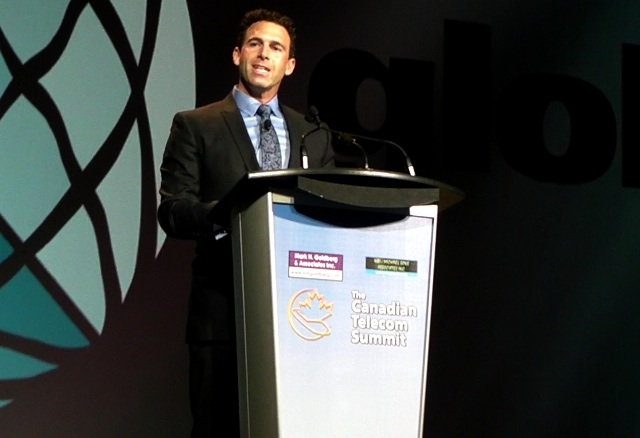
Two companies on very different sides of the wireless competition argument have come out for and against the upcoming AWS-3 spectrum auction.
Wind Mobile and its Chairman, Tony Lacavera, was anticipating such an announcement, claiming it a “significant and important step in encouraging more competition, more choice and more value in the Canadian wireless industry,” and he “applaud[s] Minister James Moore for his positive efforts.”
Wind will be the likely beneficiary of the set-aside spectrum, as 60% of the 50Mhz in total has been kept for current operators with under 10% national and 20% provincial share in each region. With Mobilicity out of the picture, Wind is the only new entrant contending for business in major urban areas like Toronto, Calgary and Vancouver.
“Canadians are paying too much for wireless services that lag behind the rest of the world – and only increased competition will improve that,” Lacavera said. “Competitive alternatives like WIND Mobile need additional spectrum to grow and flourish. Decisions like [this] recognize that the Canadian wireless industry is maturing and demonstrate that the Government is determined to see that the demands of Canadian consumers are addressed.”
Lacavera recently told MobileSyrup that while the company is perceived to be on death’s door, it is in fact growing quickly on the back of its roaming partnership with T-Mobile. Since being announced earlier this year, over 30,000 people have signed up for the Unlimited USA talk, text and data add-on, and Wind’s user base recently rose to 735,000 Canadians. But speed is still the company’s greatest bottleneck: until it acquires new spectrum, it will only be able to offer the same HSPA+ service, albeit at a slightly faster speed, as it launched with in 2009.
Bell, on the other hand, thinks that we’re long past the point of setting aside spectrum for so-called new entrants, most of whom have had over half a decade to build up their businesses. “Spectrum is a valuable national resource and shouldn’t be given to selected companies at a bargain. It’s a cost to taxpayers,” a Bell spokesperson told the Globe and Mail. “Bell has always asked for a level playing field in Canadian wireless. We welcome competition, but all competitors new or old should follow the same rules.”
This is the same line trumpeted by the Big Three in the past, often accused of forgetting that the spectrum used to build the early GSM and CDMA networks were given for free or at very low cost to Rogers, Bell and Telus by the government.
John Lawford, Executive Director at The Public Interest Advocacy Centre in Ottawa, said the AWS-3 auction’s set-aside cache is “good news for consumers” and will allow smaller companies to roll out LTE more quickly, and with less cost than previously believed. Bruce Cran, President of the Consumers’ Association of Canada, said, “Prices won’t fall and wireless competition will not really work until Canadians have another choice.”
Quebecor’s Videotron could be the linchpin that unites all of these adjacent consumer interests. While the company is waiting for the government to begin regulating domestic roaming rates, making it cheaper for smaller providers to access competitors’ towers for use outside their own home network, it has already dipped its considerable toe in the wireless deep-end. Earlier this year, it spend $233 million to purchase 700Mhz spectrum in Ontario, Alberta and British Columbia, and has publicly mulled the idea of purchasing one or both of the remaining new entrants.
MobileSyrup may earn a commission from purchases made via our links, which helps fund the journalism we provide free on our website. These links do not influence our editorial content. Support us here.


